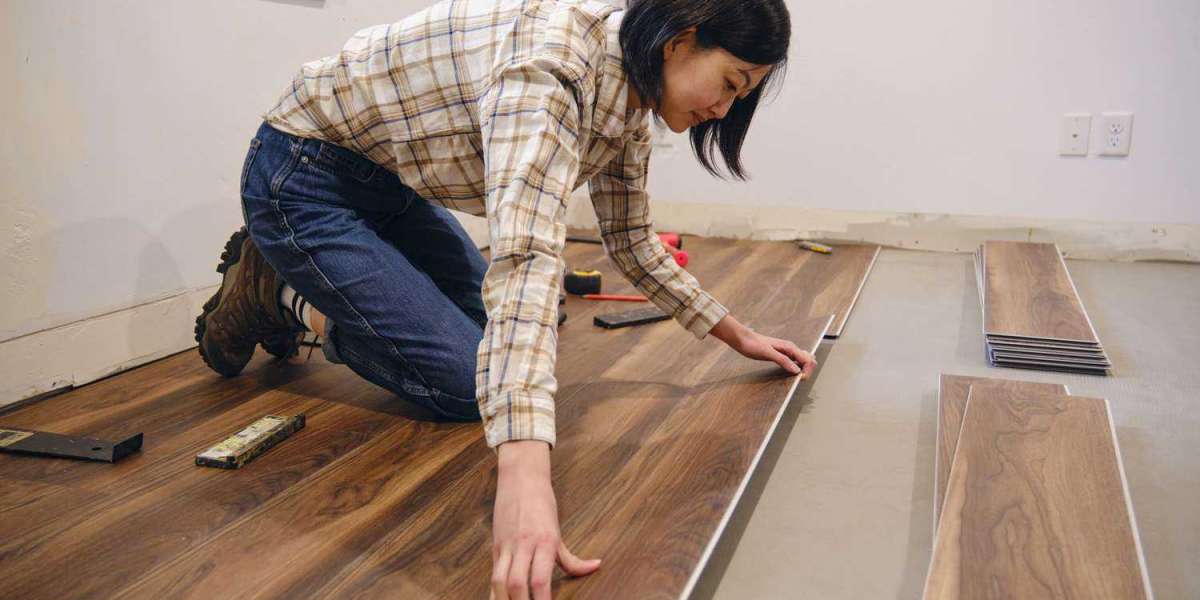The global flooring market is experiencing strong and sustained growth, underpinned by rapid urbanization, technological innovations, and a heightened focus on sustainable building materials. Valued at US$ 442.4 billion in 2024, the industry is projected to expand at a CAGR of 6.7% from 2025 to 2035, reaching an impressive US$ 902.3 billion by 2035. The expansion of the residential, commercial, and industrial construction sectors, coupled with growing consumer preference for durable, low-maintenance, and visually appealing flooring solutions, is fueling this upward trajectory.
Urban Development and Construction Boom Accelerate Market Growth
The flooring industry’s expansion is closely tied to global infrastructure and housing development. Emerging economies across Asia-Pacific, Africa, and Latin America are witnessing massive investments in real estate and smart city projects, driving substantial demand for a variety of flooring materials including vinyl, ceramic tiles, laminates, hardwood, and carpets.
Simultaneously, renovation and remodeling activities in developed regions are boosting sales of premium flooring products that offer superior performance and aesthetic appeal. Consumers are increasingly seeking eco-friendly and moisture-resistant options, while architects and designers are emphasizing customization, texture diversity, and smart underfoot technologies such as radiant heating and acoustic insulation.
Technological Innovations Transforming Flooring Materials
Advances in surface engineering and material science are revolutionizing the flooring landscape. The emergence of luxury vinyl tiles (LVTs), engineered wood, and modular carpet tiles has reshaped interior design trends by combining beauty, durability, and ease of installation.
Digital printing and 3D texturing technologies are enhancing design versatility, enabling flooring products to mimic natural materials like stone, marble, and wood with remarkable realism. Additionally, antimicrobial coatings, scratch-resistant surfaces, and waterproof technologies are becoming standard features in high-end flooring solutions, catering to both residential and commercial applications.
Smart flooring systems—integrated with IoT-enabled sensors for energy efficiency, footfall tracking, and temperature regulation—are also gaining traction, particularly in modern office spaces and smart homes.
Sustainability: The Core of Modern Flooring Solutions
As environmental concerns shape consumer behavior and industry practices, sustainability has become a central focus in flooring manufacturing. Companies are increasingly investing in recycled materials, biodegradable resins, and low-VOC adhesives to reduce their carbon footprint.
Bamboo, cork, linoleum, and recycled vinyl are gaining popularity as eco-conscious alternatives to traditional flooring materials. Meanwhile, circular economy principles are driving initiatives in flooring take-back programs, where used materials are recycled into new products.
Governments and regulatory bodies are also enforcing stricter environmental standards, compelling manufacturers to develop energy-efficient production processes and adopt green certification frameworks like LEED and BREEAM.
Segment Insights: Resilient Flooring Leads the Market
Among all product types, resilient flooring—including vinyl, linoleum, and rubber—is projected to witness the fastest growth through 2035, driven by its durability, ease of maintenance, and design flexibility. Luxury vinyl tiles (LVTs), in particular, are emerging as a dominant category in both residential and commercial spaces.
The non-resilient segment, comprising ceramic tiles, wood, and natural stone, continues to maintain a significant market share due to its timeless appeal and long lifespan. Ceramic and porcelain tiles remain the preferred choice in kitchens, bathrooms, and commercial settings for their water resistance and aesthetic diversity.
Carpet flooring, though mature, is evolving through modular and eco-friendly innovations, particularly in the hospitality and corporate sectors where acoustics and comfort are prioritized.
End-use Insights: Residential Sector Dominates Demand
The residential segment accounts for a major share of the global flooring market, driven by population growth, rising disposable incomes, and rapid urbanization. Consumers are increasingly investing in premium, low-maintenance, and sustainable flooring for both new constructions and renovations.
The commercial sector—spanning offices, retail spaces, healthcare, and education—represents another major growth frontier. The shift toward hybrid workplaces and modern design aesthetics is driving the use of resilient and smart flooring systems. Meanwhile, industrial applications are demanding high-performance flooring with anti-slip, chemical-resistant, and heavy-duty characteristics to meet safety and durability standards.
Regional Outlook: Asia-Pacific Dominates Global Market
The Asia-Pacific region leads the global flooring market, driven by large-scale urbanization, infrastructural development, and the booming real estate sectors in China, India, Indonesia, and Vietnam. Affordable housing initiatives and growing middle-class populations are further propelling the demand for cost-effective yet stylish flooring options.
North America and Europe follow as mature markets, where innovation, sustainability, and smart technology integration are key differentiators. The U.S. and Germany are witnessing high demand for engineered wood, vinyl, and carpet tiles, particularly in renovation projects.
Meanwhile, the Middle East, Africa, and Latin America are emerging as promising markets due to expanding construction activities and the adoption of modern building materials in commercial and residential sectors.
Competitive Landscape and Key Players
The global flooring market is highly competitive, featuring both multinational corporations and regional manufacturers focusing on product innovation, design differentiation, and sustainability. Major players include Mohawk Industries, Tarkett S.A., Shaw Industries Group, Interface Inc., Armstrong Flooring, Forbo Holding AG, Gerflor, and Mannington Mills, Inc.
These companies are expanding their portfolios with eco-friendly materials, digital manufacturing technologies, and modular flooring systems, while strategic mergers, acquisitions, and regional expansions are helping them enhance market penetration and distribution efficiency.
Future Outlook: Smart, Sustainable, and Stylish Flooring Ahead
By 2035, the flooring market will be defined by the convergence of sustainability, smart technologies, and advanced materials. The next decade will witness the rise of intelligent flooring solutions integrated with sensors for health monitoring, occupancy detection, and energy optimization.
As sustainability continues to drive consumer preferences, the shift toward recycled, renewable, and carbon-neutral materials will become the industry norm. With continuous innovations in design, digital printing, and circular production, the global flooring market is set to play a pivotal role in shaping the future of modern, sustainable living spaces.








